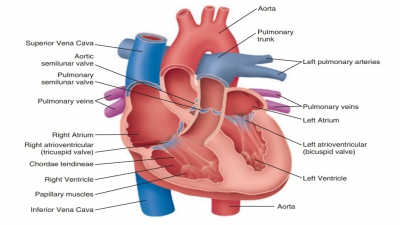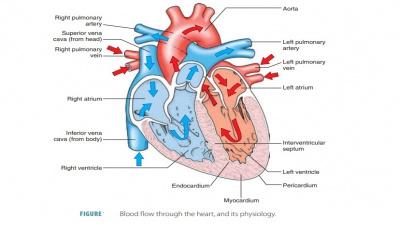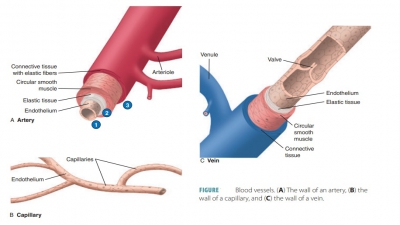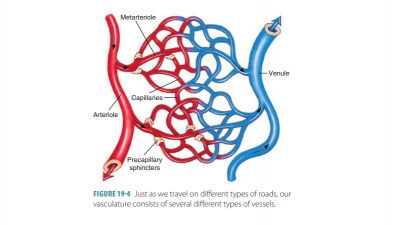Vascular System
| Home | | Anatomy and Physiology | | Anatomy and Physiology Health Education (APHE) |Chapter: Anatomy and Physiology for Health Professionals: Vascular System
Blood moves on a continual basis through the heart, arteries and their smaller branches, capillaries, thesmaller vein branches, and then the veins themselves, returning back to the heart.
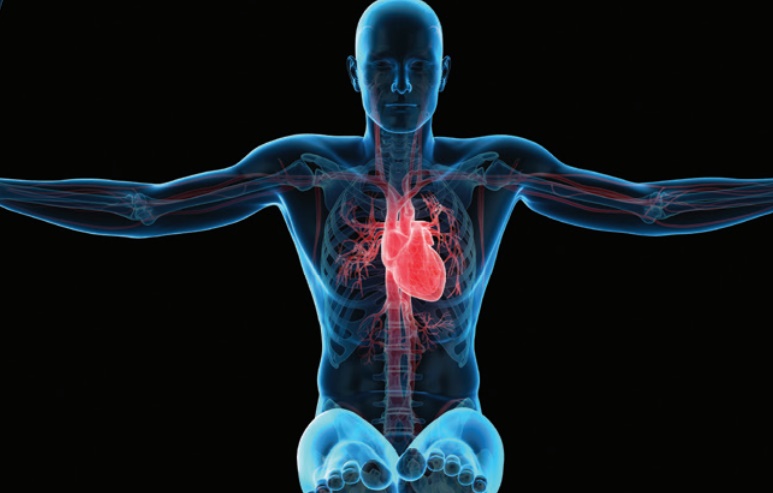
Vascular
System
After studying this chapter, readers should be able to
1. Distinguish the structures and functions of various blood
vessels.
2. Explain the difference between pulmonary and systemic
vessels.
3. Define blood flow, blood pressure, and resistance.
4. Describe the effects of the sympathetic and parasympathetic
nervous systems on the blood vessels.
5. Describe the factors that influence blood pressure and
explain how blood pressure is regulated.
6. List the major arteries that supply the head and abdomen.
7. Identify the main arteries and veins of the lower limbs.
8. List the major veins that carry blood away from the lower
limbs.
9. Describe the hepatic portal system.
10. Define
pulse pressure and list locations on the body surface where the pulse can be
detected
Overview
Blood moves on a continual basis through the heart, arteries and their smaller
branches, capillaries,
thesmaller vein branches, and then the veins themselves, returning back to the heart. The
blood vessels con-strict, relax, and pulsate as they conduct blood and other
substances to the body tissues. All body tissues require circulation to
survive. FIGURE 19-1 shows the
relationship between various blood vessels in the body.
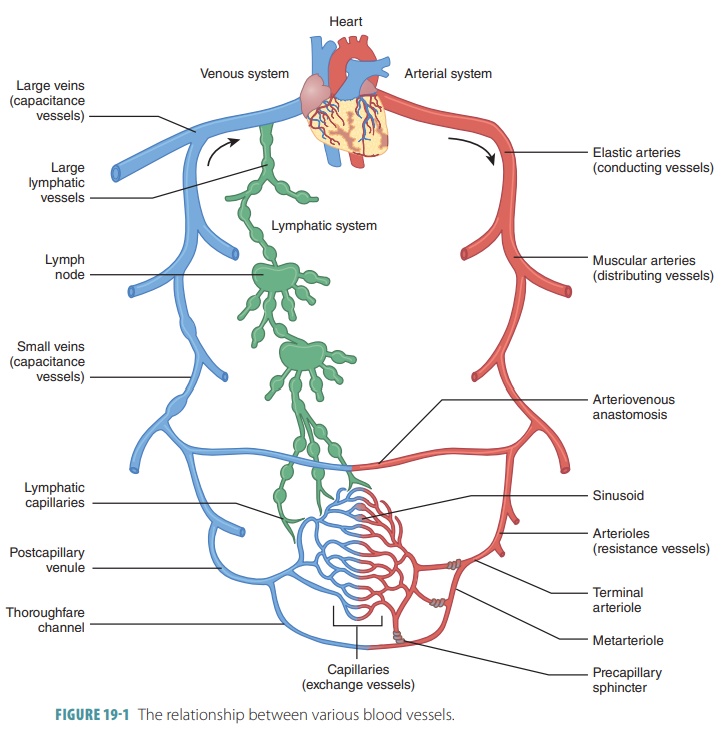
The five general
classes of blood vessels in the cardiovascular system are the arteries, arterioles, capillar-ies, venules, and veins. In total, the blood
vessels of an average human adult, if stretched out, are about 60,000 miles in
length. Arteries are very strong
elastic vessels that are able to carry blood away from the heart under high
pressure. They subdivide into thinner tubes that give rise to branched, finer
arterioles. Terms used to describe the subdivision of arteries include “fork,”
“branch,” and “diverge.” In the systemic
circuit, the arteries carry only oxygenated blood, whereas the
veins carry only deoxygenated blood. In the pulmonarycircuit, the
reverse is true. In a fetus, there are unique umbilical vessels that have
differing roles of their arteries and veins.
For children and adults, the arterioles lead to the
capillaries, which are the only blood vessels that closely contact tissue cells
and serve the needs of the cells. The extremely thin capillary walls allow most
exchanges that occur between blood and tissue cells. When oxygenated blood
leaves the alveolar capillaries, it enters the venules, which eventually unite
to form larger blood vessels, transporting blood to the pulmonary veins. The veins become larger as they proceed to the
extremely large veins emptying into the heart. Terms used to describe the
uniting of veins include “merge,” “converge,” and “join.” The pulmonary circuit
is completed by the four pulmonary veins, two from each lung, that empty into
the left atrium to complete the pulmonary circuit.

